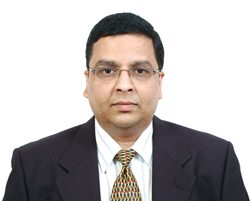Every year at ISA Vision Summit, people from the electronics industry come together to discuss what will drive the industry. The summit looks at what can be done to make India a better place to do business and a better market for electronics.
P.V.G. Menon, president, India Semiconductor Association (ISA), speaks to EFY’s Jalaja Ramanunni and Dilin Anand about highlights of this year’s ISA Vision Summit and the Indian electronics industry

Q. What key announcements were made at this year’s ISA Vision Summit?
A. The ones that stood out were about giving preference to domestically manufactured electronic products, Aakash tablet to be given free in the hands of every single child and the government keen on building a fab. The government plans to set up an Electronics Development Fund—one of the five interventions that minister Sibal talked about in the National Policy of Electronics. It is something that we are very happy about. Whether you are a start-up, a fairly mid-sized company looking for growth funding or a large company looking for work capital, the requirements of all these get addressed in the Electronics Development Fund.
Q. What industry problems surfaced at the Summit?
A. The biggest problem we are facing today is inverted taxation. To promote domestic manufacturing, we need to make sure that it is better to manufacture here than to import a fully assembled product. Currently, there are categories in which it is cheaper to import a fully built unit than importing the components and designing and building the product here. That is what we call the inverted tax structure. The second problem—talent—is universal. It is becoming very difficult to hire quality engineers. Organisations have to spend a large amount of money in retraining students recruited from engineering colleges.
Access to money comes next. Both the companies and entrepreneurs find that the cost of capital is high. For companies that are trying to get into manufacturing, the cost of working capital is also going up. SMEs find it even harder to get money as most of them do not have any collateral to offer. Banks are asking for 100 per cent collateral for any loan and the cost of capital is 16-18 per cent.
Q. What are the possible solutions to these problems?
A. These are large-magnitude problems that do not have overnight solutions. It requires intervention at multiple levels. Consider the issue of capital. If you walk into a scheduled commercial bank, it is very difficult to get an electronics company funded through the debt route. If you approach venture capitalists, they do not understand products—let alone electronic products. They understand services.
Talent is a very complicated issue. We are talking about curriculum intervention, training the trainer, motivating more people to stay in the educational system and pursue higher education degrees, etc.
I was very enthused when Dr Ajay Kumar, IAS, joint secretary, DIT, talked about a Ph.D programme. We all know that we have a critical shortage of Ph.D holders in this country. When the government talks about schemes under which needy students can be supported while they pursue higher education, it is like music to our ears. That means we will have a workforce of high quality coming in. We are working very closely with NASSCOM, universities and our own member base to see whether we can get Ph.Ds working today to go part time as faculty members to colleges around the country and share their knowledge and experience.
Q. Apart from energy efficiency, what were the other prevalent themes at the summit?
A. Innovation is coming through very strongly. It is becoming very evident that the proposed $400-billion market will not be achieved through me-too products, but very innovative products that address the problems in India and for India.
Q. How has the electronics industry in India grown over the years?
A. In Pradeep Dhoot’s session at the summit, he said when Videocon was started in the early 1980s, the industry was worth about $100 million. Today, the industry is $70 billion in size and it’s talking about growing at four times this pace to reach about $400 billion in the next eight years. We are talking about growing from 160,000 engineers to about three million engineers. Whether it is in monetary terms or employment terms, the industry is growing by leaps and bounds. Underpinning that are two mega trends in India: 60 per cent of the workforce is below the age of 25, and the fundamentals of the economy are still fine. We have got a $2-trillion economy growing at 8 per cent, which is very creditable in today’s times.
Q. What are the growing verticals?
A. Telecom is by far the biggest, so are consumer and office automation. We are also seeing increasing traction in industrial, automotive and medical electronics. You will also see new verticals opening up—like energy efficiency, which is becoming critical to the success of most companies. Energy efficiency is a national imperative as we simply do not generate enough electricity. We are working towards products using much lesser energy to do the same tasks. In large data centres or mass-volume products like fans, a simple change in the design can considerably reduce the amount of energy consumed.










